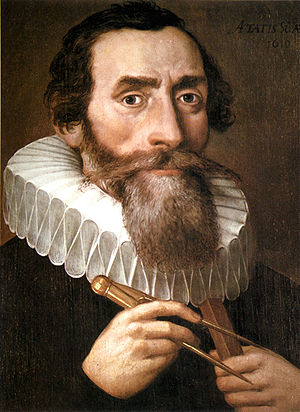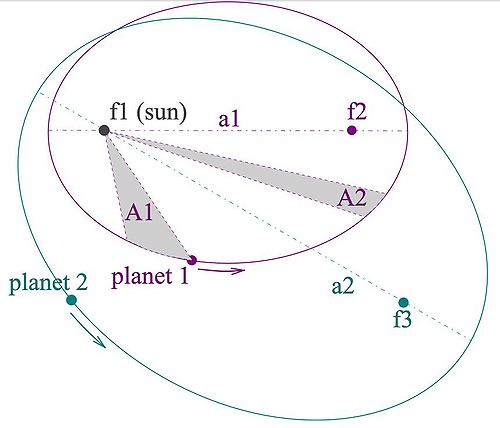Johannes Kepler
Page Claimed by Davis Johnston
Johannes Kepler (December 27, 1571 – November 15, 1630). He is an important figure during the scientific revolution of the 17th century. He is most famous for his laws of planetary motion. These laws also help lead to Newton's theory of gravity.

Background
Johannes Kepler was born in 1571 in Weil der Stadt a town in southwest Germany. Throughout his early years he attended schools and his mathematics teacher was Michael Maestlin who believed in Copernicus's heliocentric theory and taught this to Kepler. He took a appointment as a mathematics professor in Graz in 1594. He later worked for Tycho Brahe in 1600 until Tycho's death in 1601. The astronomer's data help Kepler further test and expand his theories about the motions of the planets. Johannes Kepler also served as an adviser to Emperor Rudolph II in astrological matters. He also made contribution to the development of telescope which was based on Galileo's telescope.
Works
Mysterium Cosmographicum
Kelper first work in which he defended the Copernican system
Astronomia nova
Kepler's most famous work. It contained the first two of his laws. He uses Tycho Brahe's observations of the motion of mars to help explain the motion of planets.
Epitome Astronomiae Copernicanae
This work contained Kepler's third law of planetary motion.
Laws of Planetary Motion

1. Law of Orbits
All planets move in elliptical orbits with the Sun at one of the two foci
2. Law of Areas
A line that connects a planet to the sun sweeps out equal areas in equal times.
3. Law of Periods
The square of the period of any planet is proportional to the cube of the semi major axis of its orbit.